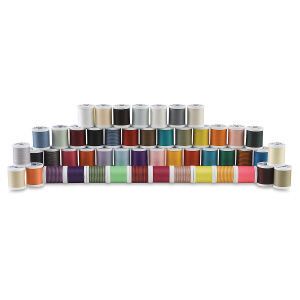HuffPost may receive a share from purchases made via links on this page. Prices and availability subject to change.
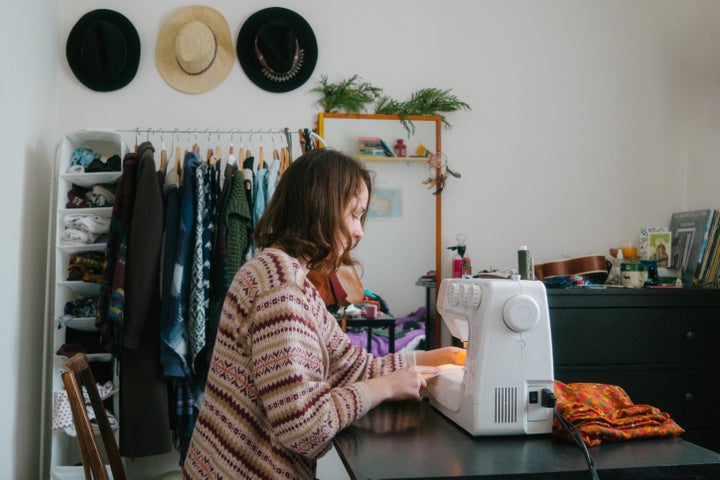
For many people, social distancing is about trying to make the most of their time in sweatpants (and bralettes and slippers).
It’s no wonder that cooking, puzzles, and arts and crafts have become trendy during these times, as have hobbies such as tie-dying old outfits or taking a stab at embroidery.
Some may be feeling productive by using at-home hair dye or gardening their own fruits and vegetables.
And others seem to be learning how to make ― or just jazz up ― their clothing and accessories. Google searches for “sewing” sprang up in April after remaining relatively stagnant in the months before, especially as some have taken to making their own coronavirus face masks.
In the middle of March, Pinterest said it has seen searches for “easy hand sewing projects for beginners” skyrocket by 738% within just two weeks. Searches for “how to embroider jeans by hand” were also up (by nearly 600%), as were “modern cross stitch patterns” (213%).
Sewing is a practical skill, especially if you need to hem the bottom of a frayed pair of jeans (whenever we start wearing real pants again) or stitch up a hole in your favorite T-shirt.
If you’re hoping to learn the ins and outs of seams and stitches, you might be wondering what you need to sew as a beginner. We turned to the experts for their advice and answers to everything a beginner should know before getting into sewing.
What essentials should I have in my sewing kit?
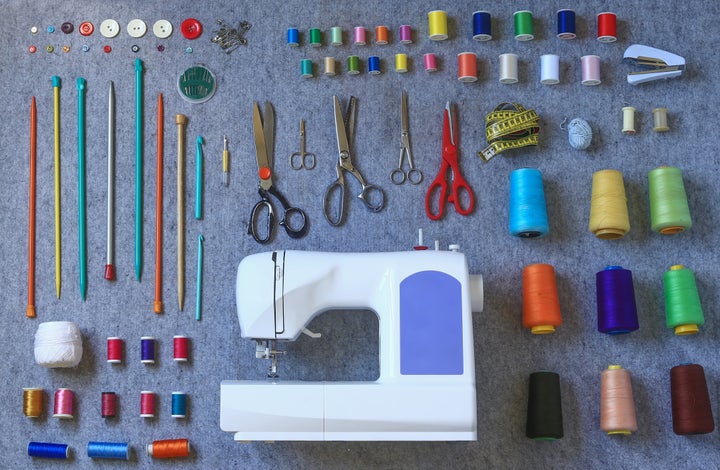
While pins and needles and thread spool sets might be obvious must-haves, there are other essential sewing supplies that every beginner should have around if they’re planning on sewing by hand.
You should get yourself a good pair of dressmaking scissors for fabric cutting, a tape measure, a seam ripper, and either tailor’s chalk or a marking pencil, according to Catherine Petrosino, the owner of Brooklyn Stitchery, a studio space that offers sewing classes.
But you won’t want the scissors you keep at your desk and the tape measure you have for home improvement projects.
For scissors — which have a special shape that’s meant for sewing, unlike those you use in an office — you might go with this top-rated pair from Gingher, a brand that’s been making scissors since 1947. And this this Singer tape measure (you probably have heard of the famous sewing machine company) is meant to measure flat and round surfaces ― important for getting your body measurements, since a regular tape measure can’t really bend.
Your kit can also include this Dritz seam ripper that can remove stitches and replace buttons and this tailor’s chalk with a triangle shape that’s easy to hold. If you prefer a pen, there’s one at Michaels with disappearing ink.
While your grandma might have stashed her needles and thread in a blue tin that was meant for Royal Dansk’s Danish butter cookies (it’s an actual thing among grandmas across the globe), you might store your sewing supplies in a clear box with dividers or a carrying case that you can use to color-code your spools of thread.
But what about a sewing machine?
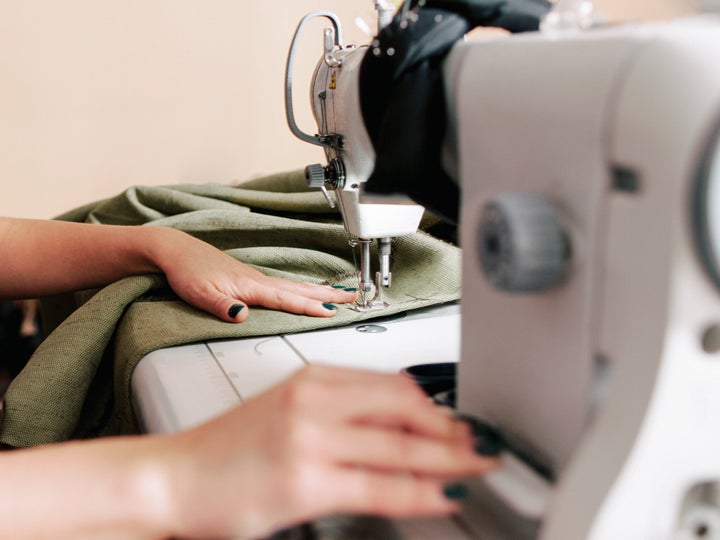
Some beginners might like learning how to sew by hand before moving on to an actual machine. But if you’re serious about your sewing, you could invest in sewing machine from the start.
If you’ve always wondered how a sewing machine works, here’s an explainer from Petrosino: Thread is wound by the machine’s bobbin, and a spool of thread is threaded through the top of the machine and down into a needle. The needle’s thread gets looped with the thread from the bobbin. When the needle pulls up from the fabric you’re sewing, it makes a stitch.
Petrosino recommends a manual sewing machine for beginners rather than a computerized one. Manual sewing machines are easy to use and tend to be cheaper, while computerized sewing machines can help with more advanced (and sometimes automatic) stitches — but can be pricey.
And you shouldn’t toss out the manual that comes with your sewing machine.
“Read the instruction booklet that came with the machine,” Petrosino said. “If you take the time to follow the instructions in there, you will be successful.”
While you’re on the search for a sewing machine, you can’t go wrong with one from Janome, Singer, Brother (which you may know from “Project Runway”) or Juki, according to Kristine Frailing, founder of the The New York Sewing Center, which offers private and group sewing lessons.
“It’s time to get a sewing machine when you’re interested in sewing more than just mending or embroidery.”
- Kristine Frailing, founder of the The New York Sewing Center
The best sewing machine deal we’ve spotted is the Singer Fashion Mate 3342 Sewing Machine, which is on sale for $130. It’s meant for beginners and has a 4-star rating with more than 100 reviews. You can also find a Singer Heavy Duty Sewing Machine at Blick for heavyweight fabrics or Janome 8002D Serger Sewing Machine at Joann.
Keep in mind that lots of sewing machines are currently sold out, especially at Amazon, Bed Bath & Beyond and Home Depot. But the best place we’ve seen so far for in-stock sewing machines is at Joann.
What should you know before getting into sewing?
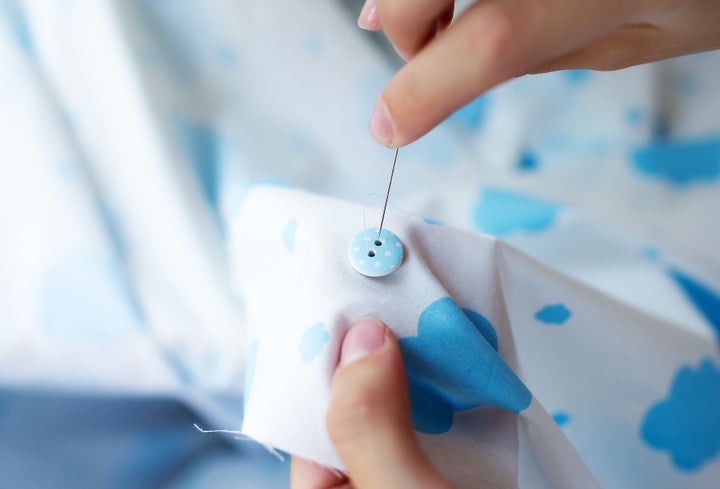
Your mind might be reeling with all sorts of sewing questions. But you’ll want to get through the basics before you make a quilt like the one you’ve been eyeing at Anthropologie.
The easiest stitch you’ll probably come across is called a straight stitch, Frailing said, since it’s simple to control and you can use in almost all your projects. Like the name gives away, the stitch is just a straight line, without looping.
One mending tasks that’s good for beginners to master is learning how to sew a button back on when it pops off. (It happens to the best of us.)
Frailing recommends first finding a thread that matches the one used for the other buttons, then making sure that that the thread isn’t twisted or tangled.
“After threading a needle, I always run my fingers down the thread a couple times to untwist the thread,” Frailing said. “This will eliminate a lot of issues when sewing on the button. I also like to make sure I double the thread so it’s more secure. Lastly, always double the knot at the end so it doesn’t come off.”
Hand-sewing is useful for mending at home but can be time-consuming, Frailing said.
Once you’re ready to move on from it, she said, “it’s time to get a sewing machine when you’re interested in sewing more than just mending or embroidery.”
What about online sewing classes?
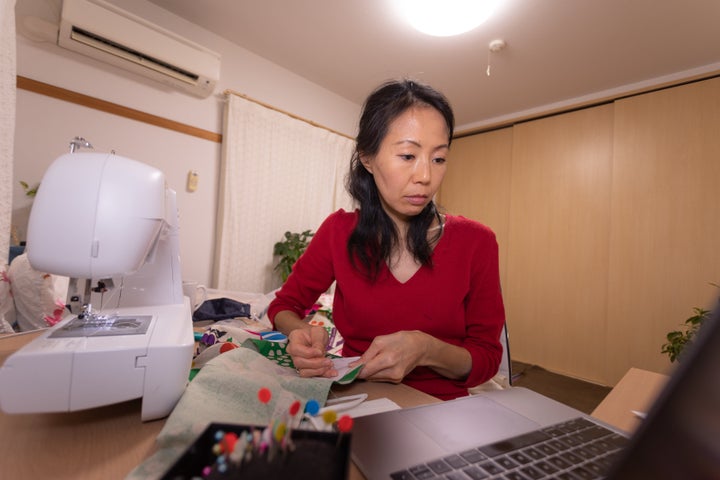
In usual times, beginner sewists (using “sewer” just doesn’t sound right) might have learned from in-person sewing lessons. But we’re in unusual times now.
Still, you’ll likely need sewing classes to move on to bigger sewing tasks like hemming a pair of pants, stitching up a hole and mending a seam.
“Sewing truly isn’t something that you can learn without direct instruction. Looking for easy stitches or simple projects isn’t the answer because a sewing student will still need the help of a good teacher to show them the way,” said Karen Lohman, a high school apparel and textile production teacher in North Carolina. “There are no shortcuts to learning how to sew.”
“There are no shortcuts to learning how to sew.”
- Karen Lohman, high school apparel and textile production teacher from North Carolina
And luckily, there are lots of virtual classes that you can take. Skillshare, Bluprint and Udemy all offer entry-level courses on sewing led by experts. For those who are especially fashionable, Masterclass has a series with designer Marc Jacobs about how he creates clothes and Coursera has a class from the Museum of Modern Art about fashion as art.
You can check out if there are any local virtual lessons near you, too, so you support your local tailors and seamstresses.
Ready to move on to embroidery and cross-stitching?
You’ve probably seen a curse-filled cross-stitch or naughty needlepoint pattern. Beginner embroidery kits are becoming a bona fide trend, and Etsy has seen searches for embroidery kits increase by 434% in the last three months compared to last year, according to Etsy’s resident trend expert, Dayna Isom Johnson.
Etsy might be your best bet for unique embroidery kits for beginners. Joann carries embroidery floss, and Amazon still has starter sets in stock. Bluprint, Skillshare and Udemy all have online embroidery classes, too.
If you’re still reeling with sewing questions, we’ve rounded up all of the products mentioned above into an easy-to-browse list, so you can get stitchin’.
